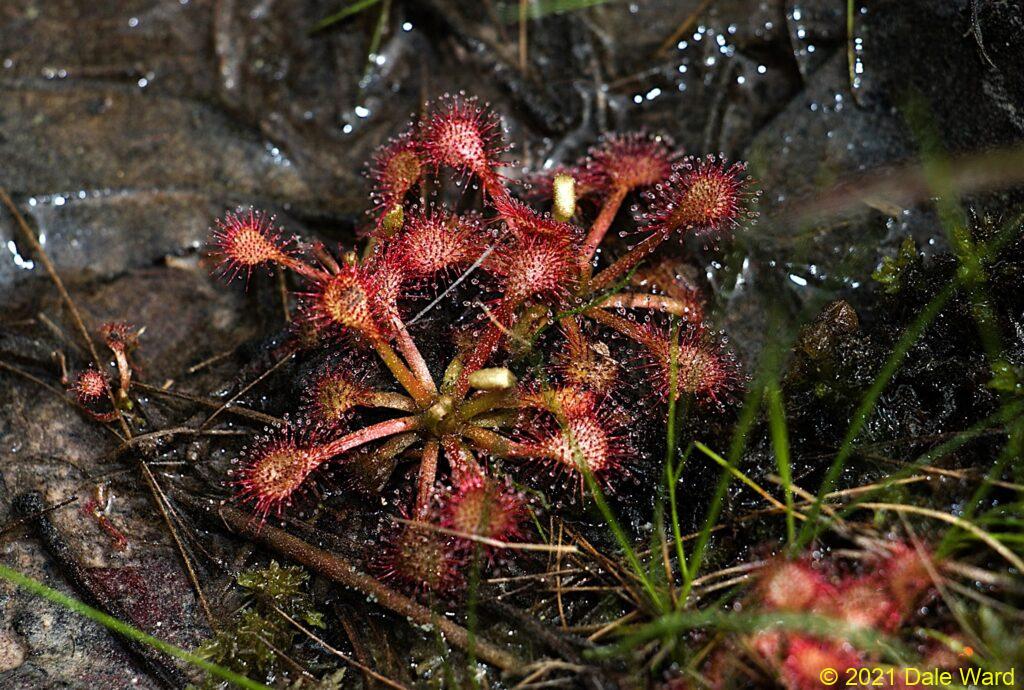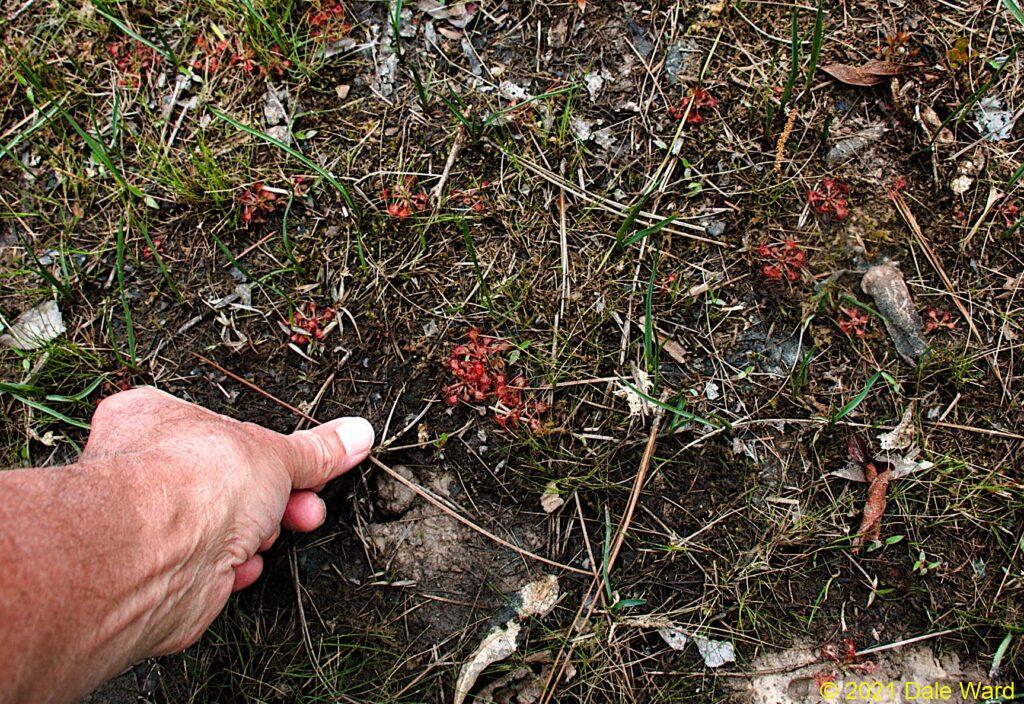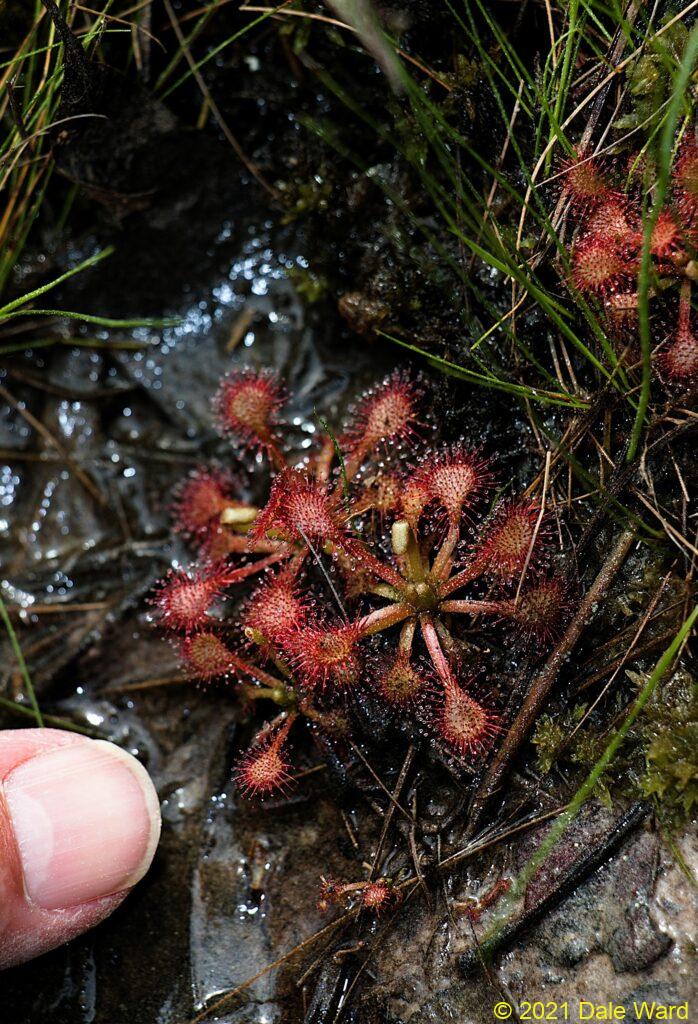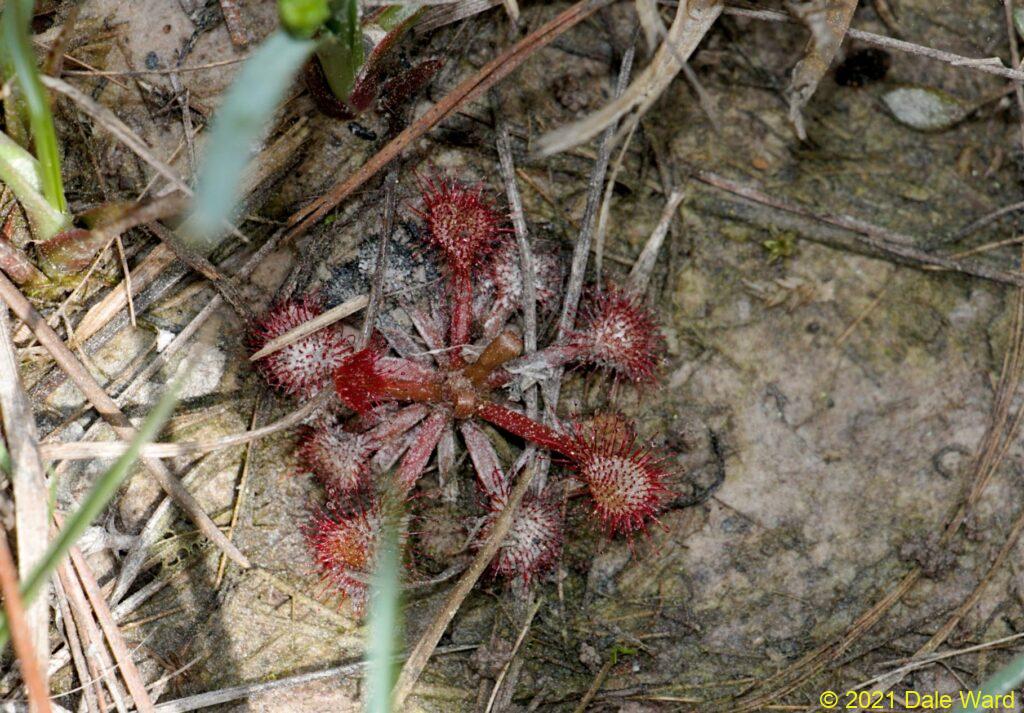Pink Sundew (Drosera capillaris) at Big Thicket National Preserve
As part of our whirlwind tour of Southeastern Texas, Laurie and I visited the Big Thicket National Preserve on March 29, 2022. We were hoping to see carnivorous plants, so we were hiking on the Preserve’s “Pitcher Plant Trail”.
When we arrived at the boardwalk portion of the trail, I was very pleased to see lots of Pitcher Plants…and as a bonus, they were in flower. As I lay down on the boardwalk to take photos of the Pitcher Plants, I noticed little flashes of pinkish-red down on the damp ground.
There were Sundew Plants scattered all over the ground!
 _Drosera capillaris_ - the Pink Sundew
_Drosera capillaris_ - the Pink Sundew
 _Drosera capillaris_ - the Pink Sundew, with my hand for scale. A couple of striking things about this photo - these are small, easy-to-miss plants - and there are a _lot_ of them here
_Drosera capillaris_ - the Pink Sundew, with my hand for scale. A couple of striking things about this photo - these are small, easy-to-miss plants - and there are a _lot_ of them here
The leaves of these Sundews are covered in long, pinkish-red tentacles. The tentacles have glands on their tips which secrete a blob of sweet, sticky fluid. The glistening blobs of fluid, and perhaps also the tentacles’ bright red color, attract insects.
 _Drosera capillaris_ - the Pink Sundew, with my thumb for scale
_Drosera capillaris_ - the Pink Sundew, with my thumb for scale
When an insect lands on the sticky blob at the end of a tentacle, they get stuck, as on flypaper. And the more the insect struggles, the more they get entangled in the other, nearby tentacles.
Additionally, the plant senses when it’s caught an insect, and the tentacles curl inwards towards the center of the leaf, closing like a fist. This makes it even less likely that the prey can escape. I’ve not seen this happen, but have read that this motion of the tentacles takes place pretty slowly, over the course of 10 or 15 minutes.
After the insect has been captured, glands on the leaf also secrete a variety of digestive enzymes. I’m not clear on whether the ‘capture’ tentacles secrete the digestive enzymes, or if the enzymes are secreted only by the shorter, non-leaf-edge tentacles. In any case, the enzymes dissolve the prey, breaking it down into simple constituent components that they can be absorbed through the Sundew’s leaf.
The Sundews were small, only an inch or so in diameter. They would have been very easy to miss. I wonder how many we just walked right by during our hikes.
Big Thicket is supposed to have at least three(!) other species of carnivorous plants that we didn’t see on our trip.
There’s another species of Sundew, as well as Butterworts. There is also at least ones species of Bladderwort, an aquatic species that sets underwater traps.
Sources:
Schnell, Donald E. 2002. Carnivorous plants of the United States and Canada. 2nd Edition. Timber Press, Inc, Portland Oregon. ISBN 0-88192-540-3.
